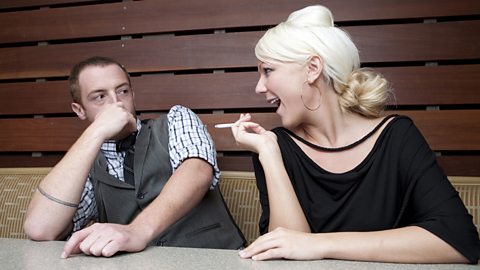Reproduction
Animal reproduction
Gametes
Humans typically reproduce through sexual reproduction. Sexual reproduction produces offspring that are unique individuals. Half of their genes come from each parent.
Sex cells are called gametes. These are sperm and eggs (or ova) in animals, and pollen and ova in plants
- eggs (or ova ) are female gametes
- sperm are male gametes
Gametes have adaptations to increase the chances of their success.
Sperm cells have many adaptions:
- are produced in large numbers to increase the chance of reaching an egg cell
- a tail to move them towards an egg cell
- many mitochondria to provide energy
- an acrosome (part of the tip of the head) that releases enzymes to digest the egg membrane

Egg cells have many adaptions too:
- a large volume of cytoplasm to store food
- a hard outer covering to only allow access to only one sperm cell
- bigger in size when compared to the sperm cell - it would take 15 000 sperm to equal the size of a single egg

Fertilisation
In sexual reproduction, gametes fuse together. The nucleus of a male gamete and the nucleus of a female gamete join (fuse), and a single new cell is formed. This is called fertilisation.
There are two types of fertilisation.
External fertilisation – gametes fuse outside the body e.g., fish, and amphibians such as frogs, toads, salamanders, and newts.
Internal fertilisation – gametes fuse inside the body e.g., mammals, birds, reptiles.
The male reproductive system
The human male reproductive system contains these parts:
- glands
- sperm ducts
- urethra
- penis
- testes
Testes
The two testes (one of them is called a testis) are contained in a bag of skin called the scrotum. The testes have two functions:
- to produce millions of male gametes (sex cells) called sperm
- to make male sex hormones, which affect the way a man's body develops
The scrotum helps maintain the correct temperature for sperm production. The two testes produce sperm and, to do this, the temperature of the testes needs to be cooler than normal body temperature. This is why the scrotum is located outside of the body.
Sperm duct and prostate gland
The prostate is a small gland about the size of a ping-pong ball, located behind the base of the penis. It is important because it supplies part of the fluid which mixes with sperm as it flows from the testes along the sperm ducts.
The fluids provide the sperm cells with nutrients. The mixture of sperm and fluids is called semen.
Penis and urethra
The penis has two functions:
- to pass urine out of the man's body
- to pass semen out of the man's body
The urethra is the tube inside the penis that can carry urine or semen. A ring of muscle makes sure that there is no chance of urine and semen getting mixed up.
Summary
| Structure | Function |
|---|---|
| Sperm duct | Thick-walled tube that transports sperm cells from the testes |
| Prostate gland | Adds fluid to the sperm as it passes along the sperm duct |
| Testes | Produce sperm and make male sex hormones |
| Urethra | Tube inside the penis that carries urine or semen out of the man’s body |
| Penis | To pass urine and semen out of the man's body. In reproduction it carries sperm to the vagina |
| Semen | Mixture of sperm and fluids |
| Scrotum | External sac of skin that encloses the testes. Helps maintain the correct temperature for sperm production |
The female reproductive system
The female reproductive systemThe human female reproductive system contains these parts:
- oviducts
- ovaries
- uterus
- cervix
- vagina
Ovaries
Each ovary is connected to the uterus by an oviduct. This is sometimes called a Fallopian tube or egg tube. The oviduct is lined with cilia, which are tiny hairs on cells.
Roughly every month, an egg develops, becomes mature and is released from an ovary. The cilia waft the egg along inside the oviduct and into the uterus.
One egg is released a month from alternating ovaries
Uterus and cervix
The uterus, also called the womb, is a muscular bag with a soft lining. The uterus is where a baby develops until it is born.
The cervix is a ring of muscle at the lower end of the uterus. It keeps the baby in place while the woman is pregnant and protects against infection.
Vagina
The vagina is a muscular tube that leads from the cervix to the outside of the woman's body.
A man's penis goes into the woman's vagina during sexual intercourse.
Summary
| Structure | Function |
|---|---|
| Ovary | Contains hundreds of undeveloped female eggs. Eggs develop, become mature and are released from an ovary. One egg is released a month from alternating ovaries |
| Oviduct | A tube that links an ovary to the uterus. It transports the egg from the ovary to the uterus. Fertilization occurs here |
| Uterus | Where a baby develops until it is born |
| Cervix | Ring of muscle at the lower end of the uterus. Keeps the baby in place while the woman is pregnant and protects against infection |
| Vagina | Leads from the cervix to the outside of the woman's body. Allows entry of the penis during sexual intercourse |
The menstrual cycle
The female reproductive system includes a cycle of events called the menstrual cycle. This starts after a female has reached puberty. Each menstrual cycle lasts about 28 days, but it can be slightly less or more than this. The cycle stops while a woman is pregnant. These are the main features of the menstrual cycle:
- The start of the cycle, day 1, is when bleeding from the vagina begins. This is caused by the loss of the lining of the uterus, with a little blood. This is called menstruation or having a period.
- By the end of about day 5, the loss of blood stops. The lining of the uterus begins to re-grow and an egg cell starts to mature in one of the ovaries.
- At about day 14, the mature egg cell is released from the ovary. This is called ovulation. The egg cell travels through the oviduct towards the uterus.
- If the egg cell does not meet with a sperm cell in the oviduct, the lining of the uterus begins to break down and the cycle repeats.
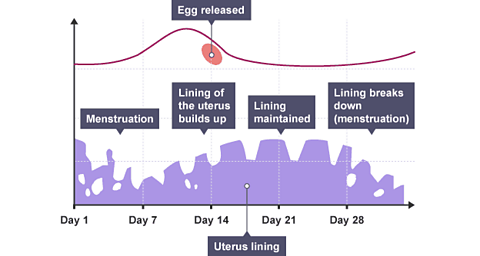
Fertilisation happens if the egg cell meets and joins with a sperm cell in the oviduct.
- the fertilised egg then imbeds to the lining of the uterus
- the woman has become pregnant, the lining of the uterus does not break down
- menstruation does not happen
More on Biology
Find out more by working through a topic
- count6 of 14
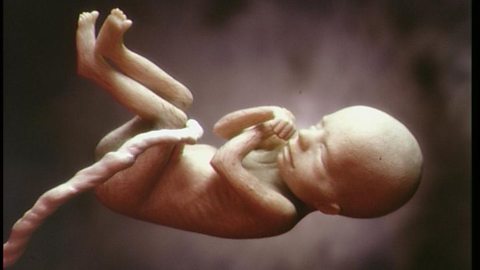
- count7 of 14
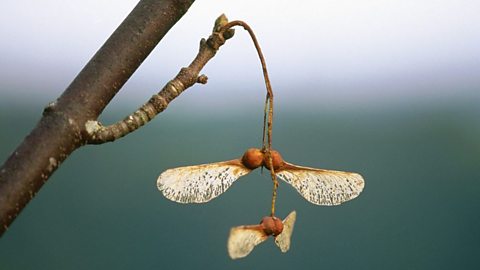
- count8 of 14
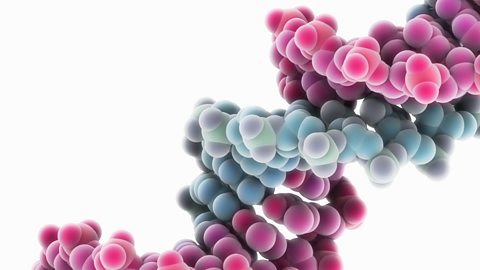
- count9 of 14
